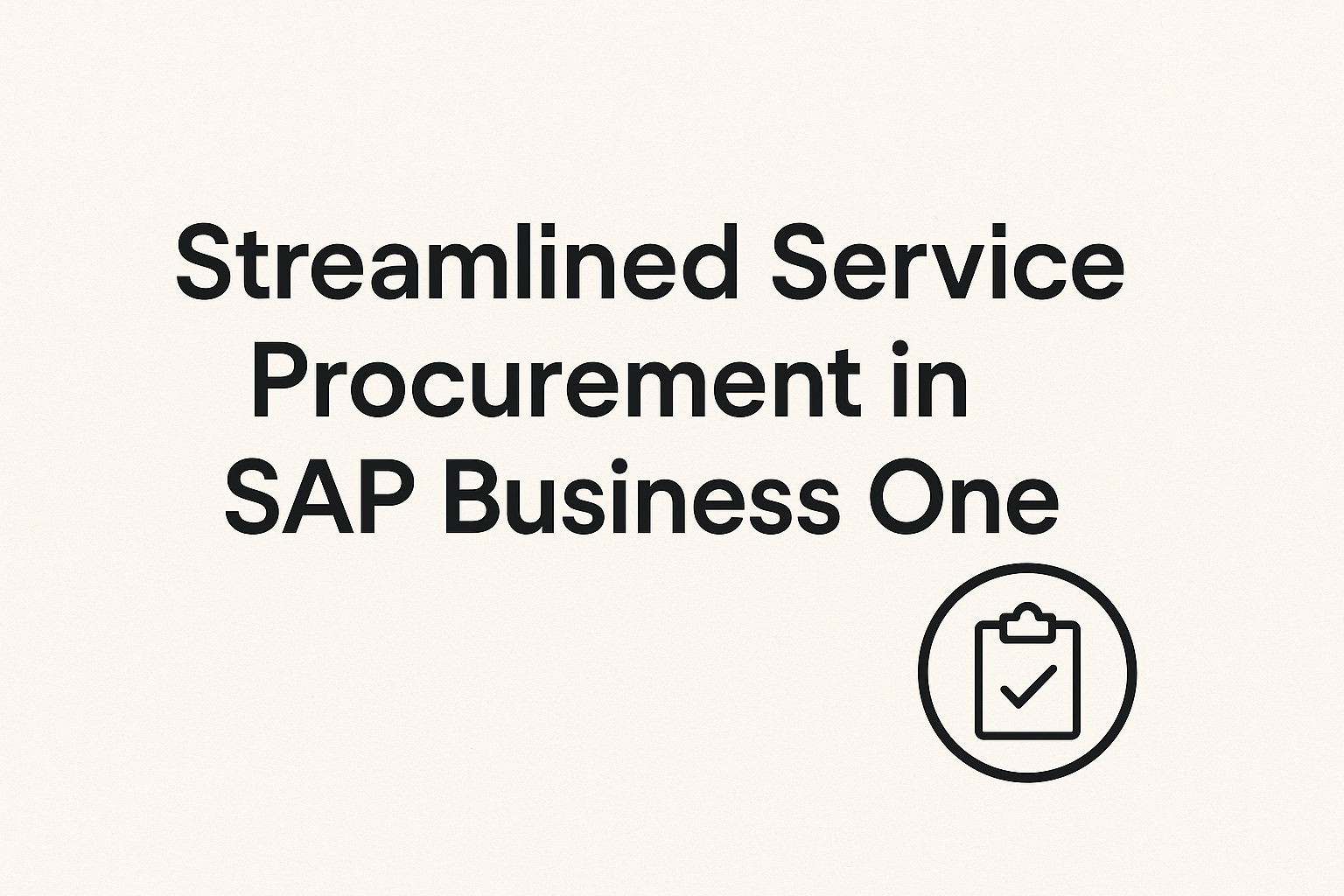
In SAP Business One, the purchase cycle for a service-type purchase follows a streamlined process compared to inventory items, as services don’t involve warehouse management or inventory valuation. The steps generally include raising a Purchase Request, creating a Purchase Order, receiving the service through a Goods Receipt PO (optional), and processing the A/P Invoice. Let’s walk through the cycle with an example.
✅ Service Purchase Cycle Overview
Purchase Request (Optional)
Purchase Quotation (Optional)
Purchase Order (PO)
A/P Invoice (Direct or via Goods Receipt PO)
Outgoing Payment
✅ Example Scenario: Installation service for machinery.
Suppose your company hires Technician for Installation service for machinery where service cost is $2,000.
Step-by-Step with Postings
✅ Step 1: Purchase Order (PO) – Service Type
Document: Make a Purchase Order with document type “Service”.
Service Description: ” Installation service for machinery”
Amount: $2,000
No journal entry is posted at this stage (non-posting document).
✅ Step 2: Goods Receipt PO (Optional for Services)
Not usually used for services.
If used, still no financial posting happens for service items.
✅ Step 3: A/P Invoice
When the service is delivered and invoiced, create the A/P Invoice.
Posting Example:
Account Debit
Service Expense (e.g., IT Services) $2,000
Account Credit
Vendor A/P Control Account $2,000
Effect: Recognizes the expense and liability to the vendor.
✅ Step 4: Outgoing Payment
When paying the vendor:
Account Debit
Vendor A/P Control Account $2,000
Account Credit
Bank Account $2,000
Effect: Settles the liability by paying the vendor.
✅ Summary
Service items don’t affect inventory or stock levels.
Direct expense recognition occurs at the A/P Invoice stage.
The COA (Chart of Accounts) used in posting depends on the G/L Account Determination for service purchases.
Disclaimer:
The views and opinions expressed in this post are based on my personal experience as an SAP Business One Consultant and are intended for informational purposes only. They do not represent SAP SE or any official SAP documentation. Always consult your SAP partner or certified professional before making any business or technical decisions. Information provided is accurate to the best of my knowledge at the time of writing and may change with future updates to SAP B1. Use any scripts or examples provided at your own risk. Always test in a development test environment before applying to live/production systems.